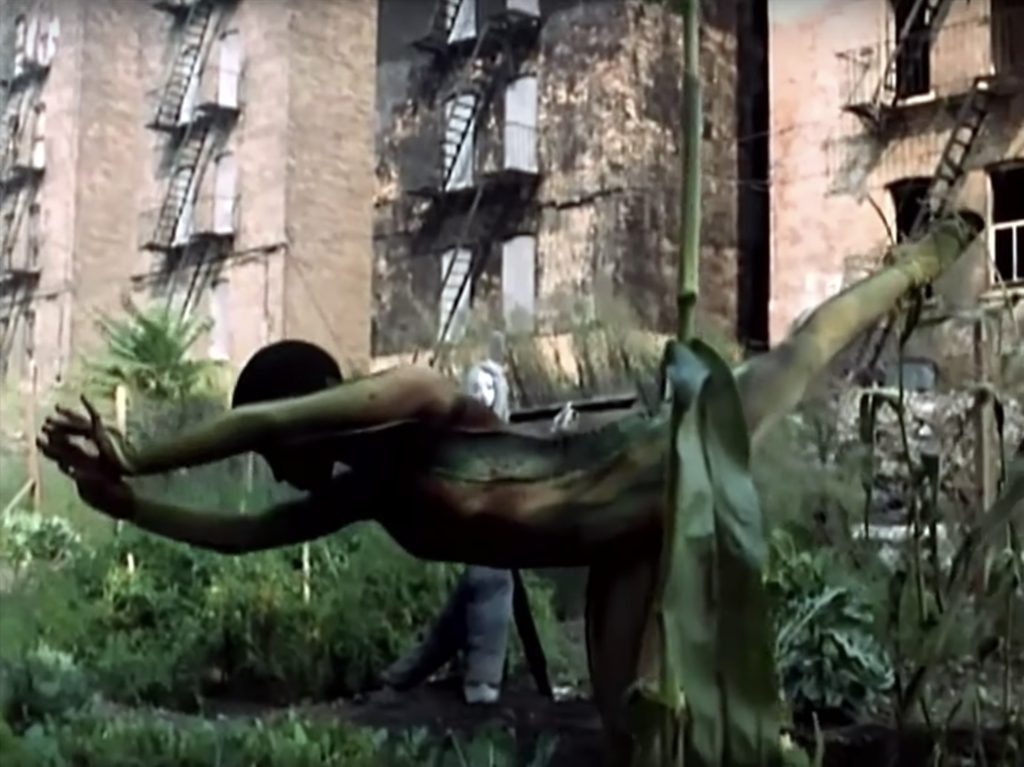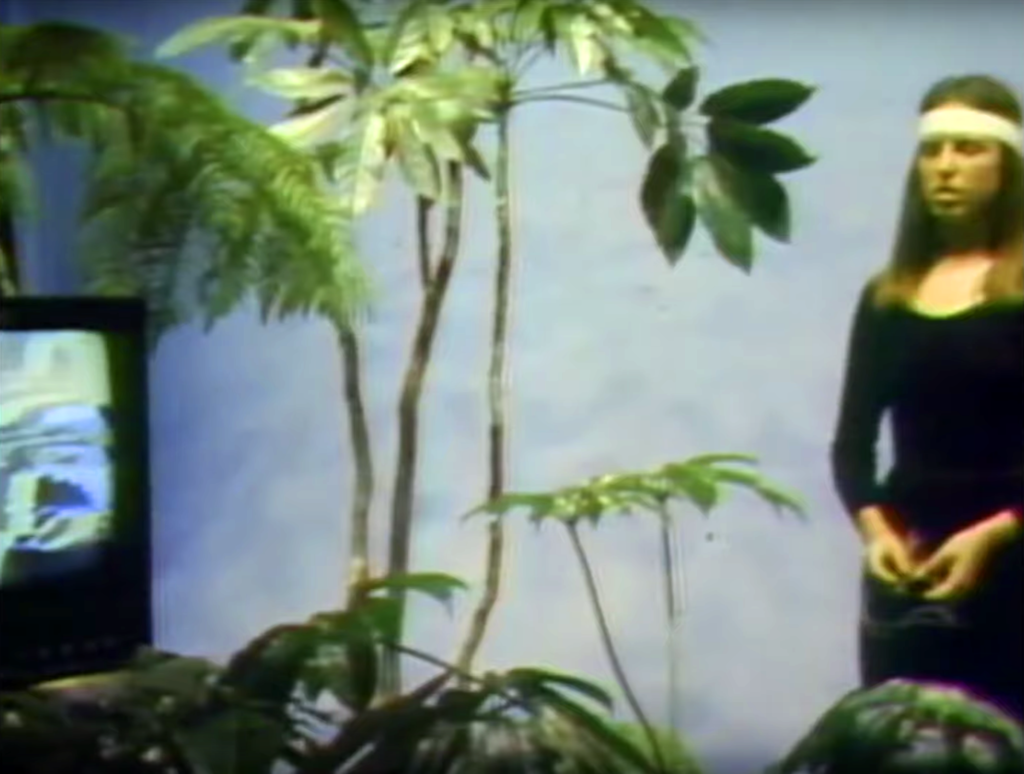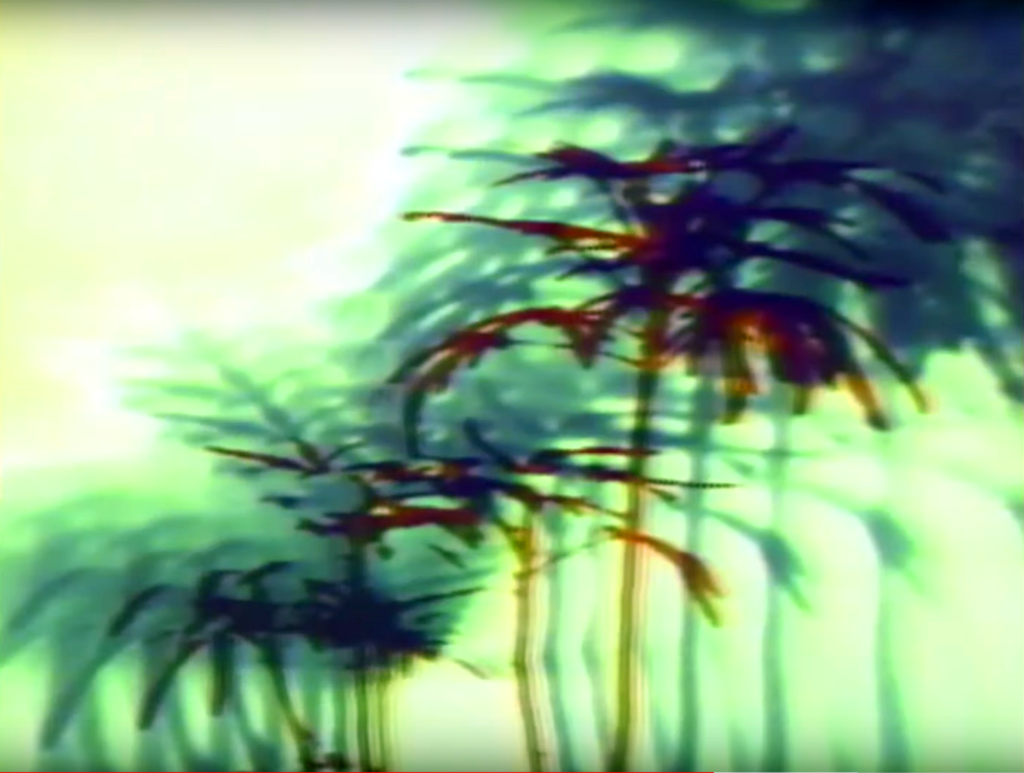There’s been a lot said about the language of trees, but what if we returned to the musicality of plants, their receptivity to good vibrations and ability, in turn, to bring great inspiration to the most unexpected branches of pop music, as well as to all manner of composers. A look back on a genre that, though it never reach full bloom, still offers some rare specimens.
We can try to see things in chronological order, although it doesn’t really get us very far. The late great philosopher Jean-Paul Sartre states in his introduction to “Questions de méthode” that, from a dialectical perspective, chronological order is always the most meaningful. But the great philosopher is saying a bunch of crap, again. The most meaningful order is precisely the opposite and when it comes to the subject, essentially it’s about Result, that is, in the end, it is only what it actually is.
Jean-Patrick Manchette in Le Discours de la méthode (1980)
That’s not really what we’re talking about
2017, breaking news: the zucchini has been saved. Or more specifically, the melody of quantum signal sequences they emitted during protein synthesis did indeed resonate with the music played throughout the greenhouse. Their stomata, like chakras of the blissful, opened wide and the chemical exchanges were most fruitful. “Thank you, Genodics!” is surely what Gilles Josuan must have cried, a farmer practicing in Bouches-du-Rhône, France, and specialized in the production of Mosaic-virus afflicted cucurbits that would otherwise have landed in the dumpster. Genodics is in the phytosanitary musical solutions market; the company exploits patents registered since the 1960s by Joël Sternheimer, whose slogan was “to every virus its song”. Sternheimer is also semi-known as Évariste, who released the 7″ single Connais-tu l’animal qui inventa le calcul integral ? (1967) and a handful of other self-published singles. Genodics proposes customized music for “every virus”, as they say. The company has therefore never produced or distributed a single, generic album for curative or sophrologic application on plants in general. But there are others who have.
The great ethno-botanical voyage
In 2009; “Passé la saison du pandanus, dansons l’iboga boogie sous le volcan exactement” (When Pandanus Season Ends, Let’s Dance the Iboga Boogie at the Very Foot of the Volcano). Also in 2009; “Two Mushrooms in My Room and Beau Delay in Your Bed.” And still in 2009; “San Pedro (sans personne), goûter au Mind Garden et passer dans le Monde Bis” (San Pedro (Without Anyone), Taste the Mind Garden and Enter Into the Next World). And finally, in 2009; “D’une boucle à l’autre, par la salvia, varie la place de l’espace” (From One Loop to the Next, via the Salvia, the Place of Space Varies”). Such were paraphrased each of the four sides to a double vinyl album entitled Musique pour les plantes des Dieux (Music for the Plants of Gods) by a group not-yet-known-as Bader Motor.

Stills from the film The Secret Life Of Plants (1979), Walon Green
The album was based on the semi-eponymous book Plants of the Gods (1979) by Richard Evans Schultes, an American ethnobotanist on faculty at Harvard, and Albert Hoffman, the famous Swiss chemist who synthesized LSD 25 from studies on rye ergot fungus. In their book, the two categorize, map, display and explain shamanic practices from around the world based on ingesting sacred plants. The album is even more precisely inspired by a collection of edible plants with psychoactive attributes selected from the aforementioned book and gathered inside a greenhouse outfitted with artificial mobile heat lamps. The musicians locked themselves in this space with their instruments and some basic recording equipment for over a week—a little water for the plants and for them—, such was the recording process for the experiment, as described in the gatefold text of the album’s first pressing, subtitled A Psychedelic Adventure in Ancestral Pharmacopeia.
But before we recount this break from reality, or what happened instead, please note the dosage information as indicated on the package: “For a feeling of stasis or slow death at the bottom of enclosed valleys where genital manure bears plants incubating strange crustaceans poking through the human envelope like a shell, it is possible to combine, by way of two turntables and a basic mixing table, the contents of sides A and C, or B and D. The producer shall not be held liable for any irreversible dilation of consciousness resulting from this sound experience.” There, it’s been said. The production reserves the right to be wary of your litigation-happy society of commerce.
The experiment, which would be more aptly described as a mystical Great Journey experience than in the more rigorous sense of scientific experimentation implying we were neither guinea pig nor researcher, was intense. The main objective, the hypothesis, trite as that may sound, was for the plants of the gods to hear the music that they historically contributed to creating by absorbing their specific alkaloids and amino acids, and through the absorption of their various derivatives chemically recreated through human know-how. Would they like this music? Would they understand the mirror effect intended by the musicians? Would they be troubled by the responsibility that objectively falls to them in the deliquescence of Western youth? If so, would they have reacted differently had they been warned about the tragic consequences of their flowing nectar? Would they have blocked it inside their stems, their trunks, vines, pistils and fruits? Would Mother Nature have been able to hold back the blows?
You will learn nothing from this experiment, and there was no holding back.
In states of modified precision, vacillating between apathetic planes and epileptic summits, the trio could do nothing more than ride down the highway of the senses heading straight into the sunset, or at least toward what seemed to be a light source, turbulent butterflies caught in the headlights of cosmic design. Having failed to tune their instruments, they tried to synchronize the valves and pipes of the little motors throbbing rhythmically in their chests. Not so bad considering that yours truly, after rotating all four sides, perhaps managed to agree on how to share this voyage. If such is the case, do not buckle your safety belt and flip back to side A of the herbarium. And a final warning: the sleeve was illustrated by Pierre la Police, so Attation! Careful there.
Keep that French Touch off my bud!
In 1996, the French label F Communication released the electronic music compilation Musique pour les plantes vertes (Music for Green Plants). It was presented as a suite of mushy ambiances for mushy people and its only reference to green plants, we find, is in taking an ironic distance from the various kinds of background music that have filled similar albums before it.
On this elevator music anthology you will find the label’s delicate flower directed by Laurent Garnier (no relation to the plant-based shampoo brand) and Éric Morand. There is also DJ Cam, Hyphen, Zein Angelus, Juan Trip’, Edoram, Laurent Garnier himself, A Reminiscent Drive, Scan X, Chaotic Ramses and Nova Nova. The thing was released as a compact disc. There was also a 12” maxi-single, but it only contained four of the tracks found on digital version.

Stills from the film The Secret Life Of Plants (1979), Walon Green
The tracks, very harmonic, full of repeating notes, sampled or played, have not aged well—here it seems that Lonnie Liston Smitm has been sampled, there a yawning, sorry. But this music seems even more distant than the music that precedes it on this rather young horizon of historicity. Perhaps, if we actually want to enjoy re-activating nostalgia, it requires a little more depth, more momentum from the springboard of our memories, so it can accelerate like a boomerang and return to our ears with long-forgotten emotions in tow, a sickly-sweet Proustian pastry that we welcome mouths open and eyes closed. For now, all we recall are moments of profound boredom in lounge bars, subjected to the limp assaults of Café del Mar anthologies, Costes or coming from the Buddha Bar of sinister memory. These series of seemingly infinite numbered CD-compilations now pollute the stands of flea markets the world over, praying for any possible second life other than being reincarnated in the useful but less flattering form of pigeon deterrents hung from apartment balconies on the outskirts of contemporary metropolises.
And yet, this would be no dishonorable end for a music that claimed, at the time of its release, to be sound design. Contrary to sculpture, which also takes up space, design often qualifies itself as such because it is supposed to fill a function. Avoiding a balcony soiled by droppings from volatile beings and preventing them from devouring all the seeds you so carefully planted in the narrow garden tufts that provide some semblance of nature in this urban desert, well, that doesn’t seem like such an incongruous end for a kind of production that, at the time, thought itself so clever for scorning its modest predecessors who actually did want, with more or less seriousness, to address plants.
The blind test and the sunflower
Journey Through The Secret Life Of Plants from 1979 is a Stevie Wonder record that was not meant to be heard by plants. It is the original soundtrack to a documentary film on our changing relationships to the plant kingdom, a topic clearly in vogue in the 1970s. Once again, the affair reeks of opportunism, with a triangulated release of a bestselling book The Secret Life Of Plants by Peter Tompkins & Christopher Bird, a documentary about insects and box office success The Hellstrom Chronicle by Walon Green, and the platinum certified vinyl Songs In The Key of Life by Stevie Wonder. Take one third of the book’s content, one third of the documentary’s strings and add a final third of empathetic music from the hand of a prestigious songwriter, and according to the projected patterns of cultural capitalism, you are sowing success.
Fact is, not a whole lot was reaped.
Perhaps the project came too late in the decade; the hemp cord of communication to the plant world had been worn down to its last fiber. Perhaps the fact that a blind artist had composed the original soundtrack to a film seemed too far-fetched for viewers. Perhaps it was the dance scenes where protagonists stuffed into tights with imitation plant textures slowly gesticulate in a New York City vacant lot, or the scenes where giant looming computers calculate the sound interactions between plants and humans. Perhaps the overuse of sunsets was to blame—it became an explicit pattern announcing the end of an enchanted moment—or the seriousness applied to scientific approximations ultimately lost the audience. Still, it featured Soviet experts, donning white lab coats and cigarettes dangling from their mouths, who run a cabbage through a mincer right next to a plant smothered in sensors that, like a garden EEG, are meant to record the plant’s reactions. It all dovetails into the same: either it’s all a joke, or it’s torture. In both cases, the disco-shirt-wearing hippie viewer did not appreciate it. The apparition of Stevie Wonder himself in the final scene of the film, wandering through a blooming sunflower field with his beaded braids but sans dark sunglasses, to sing the title song was not convincing, though it did take guts.

Stills from the film The Secret Life Of Plants (1979), Walon Green
The music, composed with the aid of the first sampler sold on the market—the Melodian by Computer Music—and the artist’s famous organ, Yamaha company’s monstrously complex GX-1 polyphonic, is only remarkable under the lens of today’s topic. The product’s narrative flow seems built on Stevie Wonder asking to be explained every scene in the film, every plant, described then touched. And this results in each theme. If the journey truly is more important than the destination, as intonated by the Eastern-flavored philosophy of the time, then we should rejoice in this multimedia adventure that takes us beyond the borders of disability. But if we listen to the album on its own, today, we’re allowed to feel a little chagrined and think that, honestly, Mr Wonder put all his talent, all his vibrating soul, into his previous album and dry as a chrysanthemum at Christmas, he was simply out of inspiration.
One cannot help but compare the result to the marvelous original soundtrack delivered by Phillip Glass three years later for the experimental documentary Koyaanisqatsi by Godfrey Reffio. Here, the overabundance of time-lapse effects or still shots accelerated to an extreme probably has something to do with it, and this even if you feel the changing decades and therefore the problems they address. The difference between wilting and ripening, decay and maturation, bottle-fermented or cask, is often delineated by the care with which the recipe was prepared.
Roger Roger’s art of repetition
Roger Roger made easy-listening music. In 1978, together with Martin Monestier, he released the book-album De la Musique & des Secrets pour enchanter vos Plantes (Music & Secrets to Delight Your Plants). Obviously an album that speaks to the topic at hand and that is surprisingly easy to find in France. For the past four decades it has haunted flea markets and yard sales, and now even specialized Internet sites. The gatefold sleeve opens onto a forty-page booklet containing numerous shorts chapters and illustrative black-and-white photographs.
Roger Roger made a name for himself in demo music, that is, primarily for films and radio shows that did not specifically come to him to procure a particular musical color, but who took their pick from stock catalogues created by the musician and suggested by the publishers. There are ‘banana-peel’ and pail-of-water-over-the-door comedy tracks, just as there are ones for smooth-talking secret lovers and ‘oh-no-my-husband’ moments, or for adventures in a deep-space future with myriad shuttle takeoffs and landings, laser ray blasts and nasal alien languages; and also for bucolic forays into nature, with joyful panpipes and bells ringing on bovines in the distance. Basically, there’s something for everyone, but especially for every need. Any aspiring Francis Ford Coppola could turn to his catalogues for a Valkyrie played on the kazoo, just as the Douglas Sirk of corporate films could find some tear-jerking music to accompany a water-cooler drama. Animal documentarists could eagerly emphasize the beaver family’s last pre-hibernation meal and nudist radio presenters could find the perfect end-credits music for their weekly Mature & Discovery broadcast.
Regarding the opus of interest to us today, Roger Roger composed a suite in two parts, maliciously entitled, with a wink to Gershwin, Rhapsody in Green. Once again, the artist covers a broad spectrum. There’s chamber music that longs to be Antonio Vivaldi, film music in the spirit of the times like Francis Lai for Claude Lelouch, and an attempt at Indian music with tabla and sitar (clearly not yet mastered by the instrumentalists) undoubtedly included to please the tail end of the hippie comet that, in the late 70s, was emitting its final wafts of patchouli. The synthesizer also makes a cameo although all in all, the piano is the true leader of the affair. And a well-rounded affair it was—in fact, a commission—since the brains behind the operation was not the musician but journalist, writer and television man: Martin Monestier.
“A book written for you by Martin Monestier. An album ‘conceived’ for you by Martin Monestier and composed by Roger Roger” read the liner notes, or the cover if you prefer. The journalist, a plant expert (but also an expert of other major matters such as Suicide, Dwarves, Halles de Paris, Monsters and The Duel), in a series of brief chapters that rather skim the ground with a dusting of pseudo-scientific terms than truly dig deep into a subject, manages to casually sow a few surprising revelations. Plants have the same reactions as animals, Approaching the plant psyche, Emotions close to human ones, Plants read into our thoughts, Plants suffer, Plants need love, The mysterious loyalty of plants, The memory of plants, Plant intelligence, Plants can speak, The vegetarian’s dilemma, How to establish a dialogue between you and ‘them’, Plants must not get bored, Do not neglect them from your family, Do not fight in front of them, Love them and they will be yours, Care for plants as you would your children, are some of the chapter titles that, I hope, make you want to know more, because at this stage in the booklet, we haven’t even yet broached the topic that we’ve come here for and the discoveries about the relationships between music and plants are truly gripping. In addition to the now recent discovery of sound waves facilitating the opening of plant stomata, enabling it to exchange with the environment, Martin Monestier goes further, identifying each plant’s taste with a veritable classification by genre. He underlines the benefits of classical music, the strange charm of oriental music (in the broadest sense, of course, as Ravi Shankar’s music led plants to lean 70° toward the speaker), and he notes that jazz can seduce them and the incredible indifference they show toward folk, country, pop or semi-pop music. But the worst is yet to come, prepare yourselves for a complete reversal of the geometry of innocence, as Bob Dylan would put it, an artist that plants could care less about. Rock music kills them! I repeat: Rock music kills them. Plants will try, by any means, including suicide, to get away from this traumatizing music. Subjected to Led Zeppelin, Vanilla Fudge or Jimmy Hendrix, or any other kind of “forceful and discordant compositions that sacrifice harmony over volume and rhythm,” they die within fifteen days. If you are someone who wants to live fast and die young, please, have mercy on your plants and move the Ficus away from the record player.
I’ll spare you the extensive horoscope that reveals how Cancer pairs well with Alpinia or the swamp lily (and here we’ve been moaning all these years about tobacco), or the touching story of professor Ken Hiashimoto, Doctor of Philosophy and Science who succeeded in establishing a dialogue, unique to this day, with his cactus after having taught it to count to twenty. The plant, full of confidence, even lost all its spines, probably and rightly persuaded that it no longer had anything to lose. The end is a bit long, but you are free to investigate deeper into the question of whether you sometimes dream in Poison Ivy.
From synthesizer to photosynthesis
Once, in the domain of pop culture in the largest sense of the term, there was also that album by Mort Garson. It was in 1976 and called Plantasia, or more precisely, Mother Earth’s Plantasia. It wasn’t available in record shops, nor in shops dedicated to healing the mind and body, a market that was beginning to blossom a bit all over the United States back then. It was only available in a garden center called Mother Earth, located in Los Angeles. And although we were never there, there seems to be a relationship between the store’s name and the product on offer that brings us to one very probable conclusion: that opportunist hippies finally found some suckers.
Mort Garson was an electronic music composer of Canadian nationality. His moment of glory came when the TV station CBS used his music to accompany a re-broadcasting of the space mission Apollo 11. Unfortunately, he was not asked back for the Apollo 12 mission. Strange, considering he was a kind of specialist in soundtracks for sequels. Beware of the Blob! in 1972, follow-up to The Blob from 1958 (with Steve McQueen), that’s him. More American Graffiti (sequel to the 1979 original): also him. Grease 2 (1982): he strikes again. He also composed Signs Of The Zodiac (12 albums, mind you) and Electronic Hair Pieces, a series of covers from the musical Hair played on Moog synthesizers. The album cover—electric wires poking out of the bald scalp of a woman with too much make-up on—recalls the images of human alpha brain wave experiments by Alvin Lucier. And as for the process, it strongly resembles Walter Carlos’ and his famous Switched On Bach, also released in 1969 and a huge hit at the time.
And so, the Moog synthesizer. A brilliant revolution in music production that becomes more widely available in the mid-1960s, more or less, and brainchild of the Robert of the same name. In its earliest iterations, the machine still had a vertical look, like a switchboard flanked by cables that you have to plug and unplug to connect the different modules, the pots needing precise adjustment and whose positions you try to memorize since technically, there is hardly any memory space. And it comes as a fixed unit. The Minimoog, called Voyager, comes out in 1970, which explains its presence on Plantasia.
The gently melodic compositions are close to those proposed in France at the time by Jean-Jacques Perrey or François de Roubaix –who were often commissioned by national TV to create soundscapes for the future. Today they seem inoffensively nostalgic, categorized more under easy listening than library music, deliciously outdated, and nonetheless harboring the kind of diegetic power that only theme-based instrumental compositions are capable of and which inevitably sound like the soundtrack to a film in your mind. Lying on your stomach in bed, a narcotic dangling from your mouth and watching a green plant grow, you cannot help but imagine that plant as potential music, too. The fact that this barely-distributed and therefore now rare and expensive original record was given away for free, in 1976, with the purchase of a Simmons-brand mattress, lends even more credibility to that scenario.
From avant-garde to avant-garden
The case of Ann Chase and her A Chant For Your Plants from 1976 is typical of its time; it contains all the stigma of gullibility and exploitation that were characteristic back then. The Lady is an artist, author, lecturer and researcher in Noetic Science. What is that, you ask? Well, my uncultured friends, it is what is taught at the Institute of Noetic Sciences (I.O.N.S.), a place co-founded in 1973 by former astronaut Edgar Mitchell (sixth man on the moon, module pilot for the Apollo 14 mission, as if by chance…) and investor Paul N. Temple. This science is aimed at encouraging and leading research on improving human potential, including “holistic health and healing” and “emerging world visions”. It also examines, amongst many other subjects, spontaneous remission, meditation, unconventional medicinal practices, spirituality, psychic capabilities and the survival of consciousness after physical death. Ann Chase also has a diploma from the Cosmic University. We do not know exactly what a diploma issued by this establishment is worth, since the school does not appear to have ratified the Bologna protocol granting equivalence to the ‘licence’ (French bachelor’s degree), master and doctorate. All the teachings seem to be translated from Hebrew, and they speak, on a backdrop of soft synthesizers, of Melchizedek, one half of the Great Council of Light and member of the High Council of Divinities. His teachings are pandering warnings about our human condition steeped in Old Testament writings and strange cosmic allegories. It’s rather confusing and on the whole, seems more like a vile hodgepodge of sectarian offshoots with vague Judaic connections than a responsible educational curriculum provided by a brick-and-mortar college.
Armed with all this esoteric knowledge, bolstered by a legendary astronaut and a powerful biblical figure, one might expect Ann Chase to produce a record on par with Tarot (1973) by Walter Wegmüller, Lord Krishna Von Goloka (1973) by Sergius Golowin, or Penetration: An Aquarian Sympho (1974) by the Ya Ho Wa 13 sect. Major disappointment. The diamond hits the vinyl to bring us a studied version of Érik Satie’s Gymnopédie no.1 dryly played on guitar and flute. The boredom has already set in when a female voice begins to speak in English, and it’s hard to tell if things will improve. A long, verbose litany spans the entire side A: “What tranquility a quiet life affords/I am listening to my thoughts, they sound like a rhapsody in green/My thoughts are with you, dear plants, you are such wonders to me/We are beings living here on Earth together, breathing the same air, feeling contact with the soil/We are one in the shadow of God/Your majestic silence alone is worthy to be heard/A vision of the quest is the quest itself/Since prayers are answered we will pray/With the unfolding of our souls, we shall reach the true meaning of enlightenment/Let us listen to the voice of Nature/A consciousness shines on all creatures that has been handed down from one to another/Seeing you change through the days of my life, you teach me a lesson of strength and endurance, serenity and repose/I know the Nature spirits are busy helping you grow…” It wouldn’t cost much to spill some more ink on this indigestible combination of vapid beatitude and stale belief, but just the fact of having to re-listen to this record and transcribe any more of it seems outright unbearable, and the neighbors are on their last nerve. The only positive thing about this record is that both sides contain the same track—guitar, flute and voice, same music, same text—which spares us some time.

Stills from the film The Secret Life Of Plants (1979), Walon Green
The question remains as to what exactly Ann Chase contributed to this album, considering that she does not play the flute (that’s Paula Fulvio), nor the guitar (that’s Ann Walter), and she didn’t compose the music (that’s Érik Satie) and she doesn’t even narrate the idiotic text (that’s Danae Alexander). She is listed in the liner notes as the producer. If you rummage a little further, you’ll find that it’s actually her passion for a photographic technique called Kirlian that inspired this sound adventure. When placed under voltage, photographed objects emit multicolor halos; it’s basic physics and is called the Corona Effect. But to hell with those boring details! The Lady, clearly more in tune with parapsychology, is indeed a product of her time and space. The technique, thought to reveal the aura of photographed plants, was very trendy in the US in the 1970s following the publication of a book by Sheila Ostrander and Lynn Schoreder, Psychic Discoveries (1970). Ann Chase explains her modus operandi on a typewritten and hand-signed note: she photographs plants using this technique, then makes them listen to her record, and then re-photographs them using the same technique again. Their aura undergoes a noticeable variation, it works! Buy my record and listen to it, and do so often as “this Chant will take you on a psychedelic trip through your favorite plant, and into yourself.”
The dentist takes a bite
Doctor George Milstein was a pioneer, and like all pioneers, he couldn’t help but be misunderstood, mocked and vilified. The retired dentist-turned-cultural-actor, first as an amateur and then more professionally, and his bromeliads, a colorful tropical hemp plant, knew exactly what he wanted. In 1970, he released his first album dedicated to the well being of indoor plants, soberly entitled Music To Grow Plants presented by Dr. George Milstein. With this, he embarked on a decade that would be rich in the matter, since, taken at face value in any case, it had a heard time crossing over into the 1980s.
The green cover, of course it was green, depicts the good doctor in the flesh, sitting down in a brown suit and orange tie, about 60 years old with male pattern baldness and a cherubic smile, looking straight at the camera. In his right hand sits a white pot containing an unidentifiable plant, perhaps a bromeliad. His left hand gently strokes one of its fronds. Behind him are shelves teeming with a considerable quantity of small potted plants that could be of the same variety as the one he is caressing. Further on, a wood-paneled wall stands idly.
Obviously the title of ‘Doctor’ here is a somewhat deceptive, since the doctorate in question was not in botany but in dental surgery, but that’s of little importance. You just want to trust him, all the more because the record includes a famous guide, written by the doctor himself, on how to successfully grow your plants at home. And if things stopped there you would clearly have your money’s worth, but the good doctor even throws in a packet of seeds; ah what simple joy of discovering an object within an object, that surprise inside the box reminiscent of Pif Gadget and Bonux gifts, such primal happiness! Seeds for what? We don’t know yet, but who cares?! Don’t spoil this for us.
And the music, you ask? It must be played a minimum of forty-five minutes per day, every day, to your plants, or else you won’t see any effect. Listened to in detail, the music is both terribly banal and completely incredible. Doctor Milstein being versed neither in musicology nor botany called on an obscure composer duo called Corelli and Jacobs to come up with this extremely generic music, a cocktail-party ambiance typical of the 60s, something that doesn’t stain, even under the pots, a completely unnoticeable music, even in an elevator, a kind of beige presence that hangs out in shopping areas, airports or waits with you on the phone. There’s a hint of swing, the music fills the space a lot like how Muzak did in its time, an antonomasia for the eponymous American company. But do not underestimate our good doctor’s propensity for quasi-Situationist infiltration techniques, because the thing gets more complex in an unexpected way.
At the start of each song, it seems as though you can hear a slight sound, a flat and very high frequency, a phenomenon akin to a ringing in your ears, one that riles up neighborhood dogs and makes you question whether the phases are correctly cabled on your stereo. In other words, there’s that little something, that weird little thing that makes you wonder, is it real? Or am I just bored? A bit like those microtonal variations in a La Monte Young environment. But not at all, it is no mistake, it is all intentional. By reading the liner notes, we learn that these frequencies were actually scientifically placed on the record to resonate with plant frequencies and stimulate them; that the music is actually only there to hide these notes from the human ear, which cannot be affected. The production therefore apologizes that not every note could be completely camouflaged and that the album you have purchased was not actually intended for you.
Oh, voluptuous Felicia and philodendron, hear me now!
Translation by Maya Dalinsky
Cover: Digital collage © Arnaud Maguet















